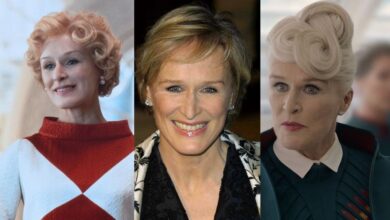Bear Payne: The Life, Legacy, and Future of Liam Payne’s Son

In the constellation of celebrity children born to famous parents, few have sparked such fascination, curiosity, and heartfelt attention as Bear Grey Payne — the only son of late One Direction star Liam Payne and British pop icon Cheryl Cole (Tweedy).
Born into fame but raised behind a curtain of privacy, Bear’s young life has already been shaped by love, loss, and legacy — a narrative that intertwines glamour, tragedy, and the quiet hope of a boy growing up in the shadow of superstardom.
A Star Born to Two Stars
Bear Grey Payne entered the world on March 22, 2017, at London’s Chelsea & Westminster Hospital. His parents — two household names in British pop culture — had spent months shielding the pregnancy from the spotlight, choosing to announce his birth with a simple but deeply emotional Instagram post:
“On Wednesday, 22nd March, Liam and I became parents to an incredibly beautiful, healthy baby boy. He’s already stealing hearts, including ours.” – Cheryl (Instagram, 2017)
From that moment, Bear Payne became one of the most talked-about babies in Britain — but paradoxically, one of the least-seen. His parents’ decision to fiercely protect his privacy created an air of mystery that only deepened public interest.
The Story Behind the Name “Bear”
The name “Bear” drew attention immediately. It wasn’t a traditional British name — it was symbolic, unconventional, and strikingly memorable. Liam later revealed the quirky inspiration behind it: their newborn son growled during the first moments after birth, prompting the midwife to joke that he sounded like a little bear. The affectionate nickname stuck.
“He was making these little noises as he was born — like a tiny bear. The name just fit him,” Liam once said.
“It’s one of those names that, when you leave a room, people don’t forget.”
His middle name, Grey, complemented the first — modern, minimalist, and resonant. “Bear Grey Payne” — a name that balances warmth and mystery — has since become synonymous with uniqueness in celebrity-baby culture, often cited among the most memorable star-child names of the decade.
Life in the Spotlight — and Out of It
Although Bear was born into fame, his parents were determined to give him an upbringing as normal as possible. Both Liam and Cheryl spoke repeatedly about their efforts to maintain boundaries.
In interviews, Liam admitted he had to learn to balance fame and fatherhood — especially after One Direction’s stratospheric success left little room for privacy. “I had to unlearn the world’s schedule and learn his,” Liam said of his son.
After Liam and Cheryl separated in 2018, they committed to co-parenting amicably. They agreed that Bear’s wellbeing came first — a shared philosophy that shaped the next several years of his childhood.
Cheryl has largely raised Bear in Surrey, away from paparazzi-dense London. She occasionally offered tiny glimpses of motherhood, describing Bear as “funny, kind, and musical — just like his dad.” Liam, though living separately, visited regularly and often shared how fatherhood changed him.
“When I’m with Bear, it’s all about him. No phone, no distractions. He deserves my full time.”
It’s a rare level of mindfulness in an industry obsessed with performance and screens.
Glimpses of Bear: Music, Personality, and Dreams
Despite being shielded from media exposure, occasional anecdotes offer a charming picture of Bear’s budding personality.
In 2023, Liam revealed that Bear had begun recognizing his father’s music:
“He heard one of my songs and said, ‘That’s Daddy!’ — it broke me in the best way.”
That same year, Liam shared a rare story about his son seeing him on a billboard:
“He told me, ‘I want to be on a billboard one day, Daddy.’”
For many fans, that single line became a symbol of the connection between father and son — the torch of creativity quietly passed on to the next generation.
Bear’s mother, Cheryl, has described him as “imaginative and caring,” adding that he’s “definitely inherited the entertainer streak.” He loves music, storytelling, and “making people laugh,” she once shared.
While no photos of his full face have been published since infancy, fans occasionally catch glimpses of his curly hair and expressive eyes — hints of both parents’ features rolled into one.
Liam Payne’s Struggles and His Love for Bear
Liam Payne’s life after One Direction was a complex journey of fame, artistic reinvention, and personal challenges. He was open about his battles with anxiety, alcoholism, and the pressures of being thrust into global stardom as a teenager.
But through those struggles, he repeatedly credited Bear as his anchor.
“I just want to be the kind of dad he looks up to,” Liam told People Magazine. “He gives me purpose when I feel lost.”
When asked what fatherhood had taught him, he said simply:
“It teaches you that love can be unconditional — even when you don’t feel deserving of it.”
The sincerity in his voice made those words linger with fans — a reminder that behind the headlines and the fame was a man trying to be a good father.
A Tragic Turn: The Death of Liam Payne
In October 2024, shocking news struck the entertainment world: Liam Payne was found dead in Buenos Aires, Argentina, where he was reportedly staying during a music-related trip. He was just 31 years old.
The cause of death, confirmed weeks later, was accidental but sudden — a devastating end to a life that had inspired millions and deeply affected those who loved him.
Tributes flooded social media. Fans, friends, and former bandmates of One Direction shared grief and memories. But the most poignant silence came from the Payne family itself.
Liam’s representatives emphasized respect for Bear’s privacy. Cheryl, through a family spokesperson, expressed heartbreak:
“Bear and I will cherish his memory forever. He was a loving father and a beautiful soul.”
It was a loss that reshaped not just pop culture’s memory of Liam Payne but also the course of Bear’s young life.
The Legacy Left Behind
Following Liam’s passing, reports confirmed that his entire £25 million (≈ $32.2 million) estate was left solely to Bear. The decision — outlined in his will — ensured that his son would be financially secure for life.
For fans, the gesture was both expected and moving. Liam had often spoken about wanting to provide for Bear’s future, saying he wanted his son to “have choices — to be free to be whoever he wants to be.”
The estate includes royalties from his solo music, songwriting credits, and One Direction residuals — assets that will likely grow in value for decades. But for Bear, it’s not the money that defines the inheritance; it’s the legacy of love, creativity, and resilience.
Media Scrutiny and the Price of Fame
The weeks following Liam’s death brought an uncomfortable glare back onto Cheryl and Bear.
Tabloids speculated about custody, inheritance, and even Bear’s emotional wellbeing — often without credible sourcing.
By early 2025, the Payne family released a rare statement criticizing “the media frenzy” that had caused “lasting damage” to Bear’s ability to grieve privately.
“He is a child who has lost his father. The circus around his pain is unnecessary and cruel,” the statement read.
The incident reignited debate about press ethics and celebrity children’s privacy — echoing earlier conversations around other star families, from the Beckhams to the Kardashians.
Through it all, Cheryl has maintained silence, focusing on shielding Bear from further exposure. Friends close to her say she’s been “incredibly strong,” turning her home into “a safe bubble where Bear can just be a kid.”
Growing Up With a Legacy — and a Void
For Bear, growing up will mean more than simply inheriting his father’s fame; it means living with a story the world already thinks it knows.
He will grow up reading tributes to Liam — the teenager who auditioned twice for The X Factor, who rose to global stardom, who stumbled, and who found meaning in fatherhood.
He’ll also see videos, interviews, and songs dedicated to him — the tangible pieces of his father’s life.
That duality — being both part of a legend and apart from it — may shape Bear’s future more deeply than any financial inheritance could.
Friends of Cheryl say she’s determined to let Bear choose his own path, whether that means a life in entertainment or something entirely different. “He’s still so young,” one family insider told Page Six, “but he’s got his father’s heart. That’s what will guide him.”
A Future Written in Music and Memory
At just eight years old, Bear Payne’s life story already contains the elements of a poignant novel — joy, fame, heartbreak, and hope. Yet, it’s also the story of normality pursued in the most abnormal circumstances.
Liam’s fans often post old videos of him singing “For You” or “Strip That Down,” captioning them with messages like “For Bear — your dad loved you endlessly.” The global fanbase that once screamed for One Direction now seems united in a softer mission: protecting his son’s legacy with kindness.
In many ways, Bear is a reminder that fame is generational — but humanity must remain personal.
He may grow up to be a musician, an artist, or something else entirely, but his name will always evoke the warmth and wonder that inspired it — a symbol of love’s endurance beyond tragedy.
Reflections: Beyond the Headlines
The fascination with celebrity children is rarely innocent — audiences want to see echoes of the famous parent, to project expectations onto blank canvases. But Bear Payne’s story invites something different: empathy.
He is not merely the son of pop royalty. He’s a child navigating loss, family, and identity under the world’s watchful eye. His story challenges the idea that fame and childhood can coexist peacefully.
As he grows older, the best gift the public — and the media — can offer him is space. Space to remember, to heal, to dream, and perhaps someday to tell his own story.
Conclusion
The tale of Bear Grey Payne is more than a celebrity footnote; it’s a mirror reflecting how fame intersects with humanity.
From the day he was born, his life has symbolized contrasts — the ordinary within the extraordinary, the public within the private, and now, the enduring link between a father’s legacy and a son’s tomorrow.
As the world continues to remember Liam Payne’s music and spirit, Bear remains the quiet heart of that legacy — a living reminder that love, no matter how briefly shared, leaves an echo that lasts forever.
And as we follow his journey — gently, respectfully — we at Newsta will continue to honor the story of Bear Payne not as gossip, but as a testament to the human heart behind the headlines.



